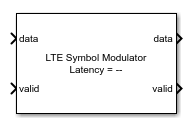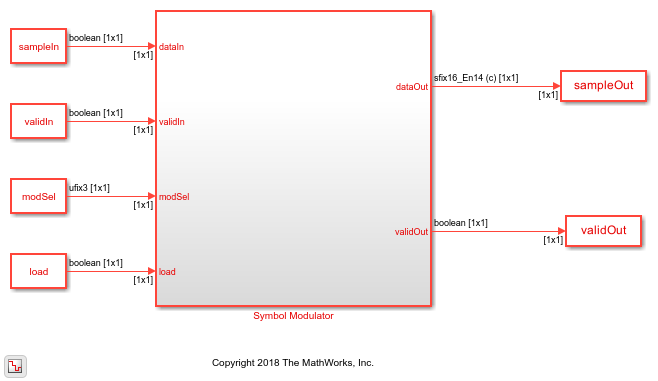LTE Symbol Modulator
Modulate data bits to complex LTE data symbols
Libraries:
Wireless HDL Toolbox /
Modulation
Description
The LTE Symbol Modulator block maps a group of data bits to complex data symbols by using the modulation types supported by LTE standard TS 36.211 [1]. The block provides an architecture suitable for HDL code generation and hardware deployment. You can use this block in the development of an LTE transmitter.
The block accepts 1-bit of data at a time, along with control signals, and outputs a modulated complex symbol with a valid signal. Each complex symbol comprises a standard number of bits based on the modulation type, as shown in this table. If you provide a nonmultiple of modulation-order bits as an input, the block ignores the output symbol with insufficient or excessive bits. The modulation order is the number of bits per symbol.
| Modulation Type | Modulation Order - Number of Bits Per Symbol |
|---|---|
| BPSK | 1 |
| QPSK | 2 |
| 16-QAM | 4 |
| 64-QAM | 6 |
| 256-QAM | 8 |
Examples
Ports
Input
Output
Parameters
Algorithms
References
[1] 3GPP TS 36.211. "Physical channels and modulation." 3rd Generation Partnership Project; Technical Specification Group Radio Access Network; Evolved Universal Terrestrial Radio Access (E-UTRA). URL: https://www.3gpp.org.



